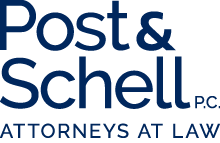Employment Taxes During the COVID-19 Pandemic

The COVID-19 pandemic has changed a lot of things, and employment taxes are no exception. To help you understand the present state of employment taxes, I will start by outlining how the employment tax system normally operates.
How Employment Taxes Normally Work
At each payroll, employers are responsible for a series of taxes:
- The Federal Insurance Contributions Act (“FICA”) tax on employees, which is deducted from their wages, I.R.C. § 3102(a);
- The FICA tax on employers, which is paid directly by the employer, I.R.C. § 3111;
- Income tax, which is also deducted from employees’ wages, I.R.C. § 3402(a)(1).
With the exception of very small employers, these taxes are reported quarterly on Form 941.1
The FICA tax has two components that are applicable to both employers and employees: First, there is a 6.2% tax that funds Social Security benefits, I.R.C. §§ 3101(a) (tax on employees), 3111(a) (tax on employers); second, there is a 1.45% tax that funds Medicare benefits, I.R.C. §§ 3101(b) (tax on employees), 3111(b) (tax on employers).
Both income taxes and taxes under FICA, are subject to periodic deposit requirements. Specifically, most employers are subject to either a monthly deposit requirement or a semi-weekly deposit requirement. Treas. Reg. § 31.6302-1(a).
The determination of which requirement applies is based upon a twelve-month lookback period commencing as of the prior June 30th. Treas. Reg. § 31.6302-1(b)(4). As a consequence, for 2020, an employer’s deposit requirements are based upon the period from July 1, 2018 through June 30, 2019. If the aggregate amount of tax in the lookback period is $50,000 or less, the employer may deposit monthly, on the fifteenth day of the following month. Treas. Reg. § 31.6302-1(b)(2), (c)(1). Otherwise, the employer must deposit the taxes on a semi-weekly basis, typically within a week or less. Treas. Reg. § 31.6302-1(b)(3), (c)(2).
An employer that does not make timely deposits is subject to penalties. The penalties start at 2% for delays of up to 5 days; the penalty is 5% if the deposit is more than 5 days but less than 15 days late, and the penalty is 10% for delays of more than 15 days. I.R.C. § 6656(a), (b)(1)(A). A higher rate may also apply if deposit is not made after either a delinquency notice or a notice and demand for payment is issued. I.R.C. § 6656(a), (b)(1)(B).
The FICA and income taxes collected from employees are impressed with a trust in favor of the United States. I.R.C. § 7501(a). An employer who converts trust fund taxes collected from employees2 faces both civil and criminal liability:
- Those who willfully fail to collect, account for, and pay trust fund taxes may be assessed with a penalty equal to the amount due. I.R.C. § 6672(a).
- The same conduct is a potential felony that may be prosecuted under section 7202 of the Internal Revenue Code. I.R.C. § 7202.
Criminal payroll tax prosecutions have become increasingly common in the past five years.
How Employment Taxes Work in the Pandemic
Two pieces of legislation and some IRS pronouncements have made radical changes in the normal employment tax regimen. First, the Families First Coronavirus Response Act, Publ. Law No. 116-127, 134 Stat. 137 (Mar. 18, 2020) (the “FFCRA”) created a series of tax credits tied to new family leave and sick leave requirements imposed on employers with fewer than 500 employees. Second, the Coronavirus Aid, Relief, and Economic Security Act, Publ. Law 116-137, 134 Stat. _ (Mar. 27, 2020) (“CARES”) also includes employment tax provisions. Third, the IRS has published guidance under the FFCRA and CARES, altering the normal rules for employment taxes.
The FFCRA
The tax provisions of the FFCRA are tied to two new forms of leave that the act created, Emergency Paid Sick Leave, and Emergency Family and Medical Leave. The provisions alter the employer’s obligation as follows:
First, to the extent that an employer pays wages under the leave provisions, those wages are not subject to the Social Security tax component of FICA. FFCRA, § 7005(a), 134 Stat. at 219. The employer still has to pay the 1.45% Medicare tax.
Second, to the extent that an employer pays wages under the leave provisions, it will receive a credit towards its Social Security tax obligations. FFCRA, §§ 7001(a), 7003(a), 134 Stat. at 210, 214.
Third, the employer receives a credit for an allocated portion of the cost of its health plans associated with the payment of wages under the leave provisions. FFCRA, §§ 7001(d)(1), 7003(d)(1), 134 Stat. at 211, 215.
Fourth, the employer receives a credit for the Medicare tax of 1.45% paid on wages under the leave provisions of the act. FFCRA, § 7005(b)(1), 134 Stat. at 219.
The credits are all tied to the caps on wages contained in the various leave provisions. They are also subject to various rules designed to bar duplicative benefits, including a requirement that they be treated as income. FFCRA, §§ 7001(e)(1), 7003(e)(1), 134 Stat. at 211, 215-16.
The credit provisions contained a flaw: A credit essentially becomes available when the employer files Form 941 after the close of a particular quarter. Meanwhile, the employer is subject to deposit rules that would require it to pay the Medicare tax on wages and then claim the credit when it filed its return. It frankly would have been much simpler if Congress had simply indicated that the Medicare tax was not payable on wages paid under the leave provisions. While Congress did not directly address the deposit rules, it gave the IRS regulatory authority to do so by providing for a waiver of deposit penalties by regulation. FFCRA, §§ 7001(f)(3), 7003(f)(3), 134 Stat. at 211-12, 216.
CARES
CARES has a series of provisions that are relevant to employment taxes. First, although it is not strictly a tax provision, the Paycheck Protection Program of forgivable loans has employment tax implications because wages paid during leave under the FFCRA are not subject to forgiveness. This is because section 1102 of CARES carves FFCRA leave wages out of the definition of “payroll costs,” which removes these wages from the forgiveness provision:
FORGIVENESS.—An eligible recipient shall be eligible for forgiveness of indebtedness on a covered loan in an amount equal to the sum of the following costs incurred and payments made during the covered period:
(1) Payroll costs.
(2) Any payment of interest on any covered mortgage obligation (which shall not include any prepayment of or payment of principal on a covered mortgage obligation).
(3) Any payment on any covered rent obligation.
(4) Any covered utility payment.
CARES, § 1106(b).
CARES also provides two forms of employment tax relief.
Section 2301 of CARES provides a potential credit against the employer’s FICA obligations for Social Security tax of 50% of qualified wages paid by an eligible employer. CARES, § 2301(a) (providing credit “against applicable employment taxes”), (c)(1)(A) (defining “applicable employment taxes” to include the employer’s Social Security tax under FICA).
The size of the employer is not relevant to eligibility, which is measured under two tests:
- Employers are eligible if operations are “fully or partially suspended during the calendar quarter due to orders from an appropriate governmental authority” that limit commerce due to COVID-19; or
- An employer is also eligible during a period beginning during a calendar quarter in which gross receipts are less than 50% of the same period in a prior year and ending after the first calendar quarter in which gross receipts exceed 80% of the like period in a prior year.
CARES, § 2301(c)(2).
“Qualified wages” generally are wages paid to employees who are not providing services due to either a suspension or limitation of operations or due to a drop in gross receipts. CARES, § 2301(c)(3)(A). For smaller employers (100 or fewer employees) the requirement that the wages be paid to employees who are not providing services due to the suspension of operations or due to a drop in gross receipts does not apply. CARES, § 2301(c)(3)(A)(ii).
In calculating credits for employee retention wages, wages paid under the leave provision of FFCRA are not included. CARES, § 2301(c)(3)(A). As with the FFCRA, the credit also includes health care costs associated with retention wages. CARES, § 2301(c)(3)(C). CARES does not alter the Medicare tax obligation of the employer or provide any offsetting credit. The employee retention credit is refundable.
Section 2302 of CARES provides for deferral of Social Security taxes. Specifically, CARES provides that “[n]otwithstanding any other provision of law, the payment for applicable employment taxes for the payroll tax deferral period shall not be due before the applicable date.” CARES § 2302(a)(1). “Applicable employment taxes” is defined to include “the taxes imposed under section 3111(a) of the Internal Revenue Code of 1986.” CARES § 2302(d)(1), which is the employer’s Social Security tax. As a consequence, the taxes collected from employees are not affected by this provision. The “payroll tax deferral period” is defined as “the period beginning on the date of the enactment of this Act [March 27, 2020] and ending before January 1, 2021.” CARES § 2302(d)(2). The “applicable date” is actually two dates: “December 31, 2021, with respect to 50 percent” of the relevant taxes, and “December 31, 2022, with respect to the remaining such amounts.” CARES § 2302(d)(3). Accordingly, one-half of the employer’s Social Security taxes must be paid by December 31, 2021, and the rest must be paid by December 31, 2022.
The deferral under CARES § 2302 is linked to the forgiveness provisions under the Paycheck Protection Program: “This subsection shall not apply to any taxpayer if such taxpayer has had indebtedness forgiven undersection 1106 of this Act with respect to a loan under paragraph (36) of section 7(a) of the Small Business Act (15 U.S.C. 636(a)), as added by section 1102 of this Act.” CARES, § 2302(a)(3).
IRS Guidance
IRS guidance relating to employment taxes during the present health crisis has included an informal FAQ, COVID-19-Related Tax Credits for Required Paid Leave Provided by Small and Midsize Businesses FAQs, https://www.irs.gov/newsroom/covid-19-related-tax-credits-for-required-paid-leave-provided-by-small-and-midsize-businesses-faqs, as well as two formal Notices, Notice 2020-21, 2020 IRB LEXIS 103 (Mar. 27, 2020), Notice 2020-22, 2020 IRB LEXIS 106 (Apr. 1, 2020).
The FAQ is probably the most startling of the three pronouncements. For example, it provides that an employer can fund qualified leave wages with federal taxes that it has withheld:
An Eligible Employer may fund the qualified leave wages (and allocable qualified health plan expenses and the Eligible Employer’s share of Medicare tax on the qualified leave wages) by accessing federal employment taxes, including those that the Eligible Employer already withheld, that are set aside for deposit with the IRS, for other wage payments made during the same quarter as the qualified leave wages.
FAQ, No. 38. Normally, if an employer used taxes withheld from employees for another purpose, individuals in control of the business could face personal liability for the funds or even criminal prosecution.
The FAQ also indicates that a penalty will not be imposed on deposits that are delayed in anticipation of credits, which is consistent with the grant of regulatory authority that Congress provided in the FFCRA. Finally, the FAQ also provides for advances:
The Eligible Employer should first reduce its remaining federal employment tax deposits for wages paid in the same quarter to zero. If the permitted reduction in deposits does not equal the qualified leave wages (and allocable qualified health plan expenses and the Eligible Employer’s share of Medicare tax on the qualified leave wages), the Eligible Employer can file a Form 7200, Advance Payment of Employer Credits Due to COVID-19, to claim an advance credit for the remaining qualified leave wages (and any allocable qualified health plan expenses and the Eligible Employer’s share of Medicare tax on the qualified leave wages) it has paid for the quarter for which it did not have sufficient federal employment tax deposits.
FAQ, No. 40.
Notice 2020-21 addresses the relevant time period when credits will be available: “This notice provides that the tax credits for qualified sick leave wages and qualified family leave wages required to be paid by the Families First Coronavirus Response Act will apply to wages paid for the period beginning on April 1, 2020, and ending on December 31, 2020.” 2020 IRB LEXIS 103 at *1.
Notice 2020-22 formalizes the deposit penalty relief provided under the FAQ and makes clear that it applies to both qualified leave wages under the FFCRA, and to qualified retention wages under CARES. Notice 2020-22, § 3, 2020 IRB LEXIS 106 at *7-*10.
The Employer’s Options
I commend the IRS for taking a pragmatic view in the current health crisis and relaxing the deposit requirements. For employers who lack the funds to pay qualified leave wages under the FFCRA or qualified employee retention wages under CARES, the IRS has plainly blessed the use of employment taxes withheld from employees for this purpose.
But I would caution employers to avoid doing so unless absolutely necessary. In part, my concern is that habits developed in the present crisis could continue when we revert to the normal rules. But there are some ambiguities presented by the recent legislation.
Under the FFCRA, one of the events that will make an employee eligible for sick leave is where “[t]he employee is subject to a Federal, State, or local quarantine or isolation order related to COVID–19.” FFCRA, § 5102(a)(1), 134 Stat. at 195. My employment law colleagues advise me that there are substantial questions whether the existing orders issued by various governmental authorities meet that standard.
While the ambiguity of section 5102(a)(1) is an employment law issue, it has tax law consequences, as the credit for sick leave wages is for “qualified sick leave wages.” FFCRA, § 7001(a), 134 Stat. at 210. The FFCRA defines “qualified sick leave wages” as “wages . . . and compensation . . . paid by an employer which are required to be paid by reason of the Emergency Paid Sick Leave Act.” FFCRA, § 7001(c), 134 Stat. at 211 (emphasis added). Accordingly, there may be instances in which the amount of credits to which an employer is entitled may be uncertain. Relief from the deposit penalties is only for credits anticipated for qualified wages and associated health plan costs. Notice 2020-22, § 3, 2020 IRB LEXIS 106 at *7. At this juncture, it is impossible to tell how the IRS will address a situation in which an employer pays sick leave wages that arguably might not have been required.
Accordingly, I would resist the temptation to apply employment taxes withheld as a funding source for leave wages and retention wages if at all possible.
Footnotes:
1 Employers with annual employment tax liability of $1,000 or less report on Form 944 annually, and they deposit annually. Treas. Reg. § 31.6302-1(c)(5).
2 The employer’s FICA obligation is not a trust fund tax as it is not collected from someone else. See I.R.C. § 7501(a) (imposing a trust “[w]henever any person is required to collect or withhold any internal revenue tax from any other person and to pay over such tax to the United States”).

